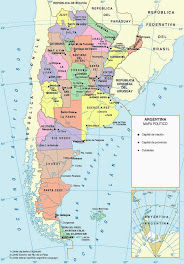
Hundreds of nervous students flood around a university notice board. They’re searching for their name and for the seat number they’ve been assigned for their exam. Some frantically wrestle with their revision notes, while others sit more calmly, running dates, facts, and figures through their minds. The time is 8:50am and the exam starts at 9.
The scene could be one at any university campus in the United Kingdom. Except it’s not just any morning; this exam starts at 9am on Saturday morning.
Unlike British students, who would probably be sleeping off the previous night before nursing a hangover, on Saturday mornings Argentine students have been up and out of their homes since dawn, have made the commute to uni, and are waiting to put their knowledge to the test.
Why not schedule the exam on a weekday?
There’s no time. A typical Argentine university student is too busy working a nine to six day job from Monday to Friday. Saturday is the only day they can sit their uni exams.
It sounds tough, and it is. Whereas university students in the U.K will go to classes during the day, and maybe do the odd bar shift in the evening to earn a little extra on top of their student loans, students in Argentine do not enjoy such luxury.
After leaving school at 18, a typical student here will start straight off in a company. For the next four to six years, sometimes more, he or she will, in general, get up in time to commute to the office by nine, work until six, leave the office, travel to university, start classes at seven, finish classes at eleven, and finally end the day after commuting home to have dinner and a rest, before repeating everything the next morning. Saturdays are reserved for exams and Sundays are used to study and complete assignments.
Student life in the U.K. starts to sound even more like one big holiday.
The most popular university in the capital city is UBA (University of Buenos Aires). UBA was inaugurated in 1821 and is a public university with over 150,000 students. With fees at the private universities rivalling and sometimes surmounting British tuition fees, it is hardly surprising enrolment in UBA is oversubscribed.
So students suffer the fourteen to sixteen hour days, the Saturday morning exams, and the Sundays spent preparing assignments, with their minds firmly fixed on the final goal and the possibility of a better career.
Not an idea that would find popular support in the UK.
Though one huge advantage of working in a company while still studying is the experience. University graduates enter the job market with six years of real work experience, usually in their field of study. This surely looks far more attractive on their C.V. than three years as a trolley boy in Tesco during summers.









